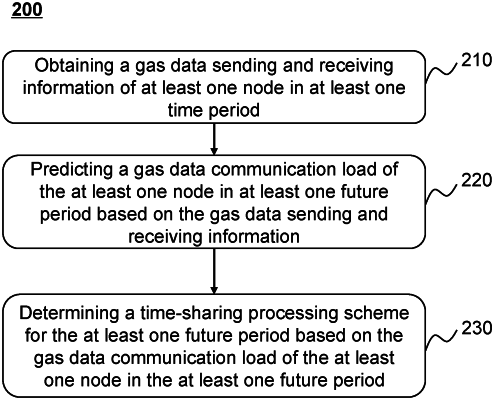| CPC H04L 41/147 (2013.01) [G16Y 10/35 (2020.01); G16Y 40/35 (2020.01)] | 8 Claims |

|
1. A method for hierarchical processing of gas data based on smart gas Internet of Things (IoT), wherein the method is executed via the smart gas IoT, and the method comprises:
obtaining gas data sending and receiving information of at least one node in at least one period;
predicting, based on the gas data sending and receiving information, a gas data communication load of the at least one node in at least one future period, wherein the gas data communication load includes a basic communication load and a floating communication load, including:
determining, based on the gas data sending and receiving information, the basic communication load of the at least one node in the at least one future period through a preset method; and
determining the floating communication load of the at least one node in the at least one future period through a predictive model, the predictive model being a machine learning model, wherein the predictive model includes an inspection feature extraction layer, a location distribution feature extraction layer, a data receiving prediction layer, and a data sending prediction layer, wherein an input of the inspection feature extraction layer is gas pipeline inspection information in the at least one period, and an output of the inspection feature extraction layer is an inspection feature vector; an input of the location distribution feature extraction layer is gas pipeline construction design drawing data, and an output of the location distribution feature extraction layer is a location distribution feature vector; an input of the data receiving prediction layer includes the inspection feature vector, the location distribution feature vector, seasonal data, a reception fluctuation degree of the at least one node, and an output of the data receiving prediction layer is data receiving volume of the at least one node within the at least one future period; and an input of the data sending prediction layer includes the inspection feature vector, the location distribution feature vector, an importance level of the at least one node, and an output of the data sending prediction layer is data sending volume of the at least one node within the at least one future period; and
determining a time-sharing processing scheme for the at least one future period based on the gas data communication load of the at least one node in the at least one future period.
|